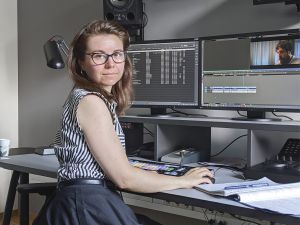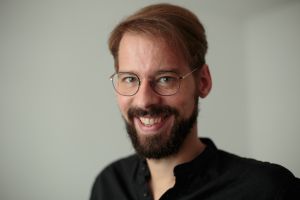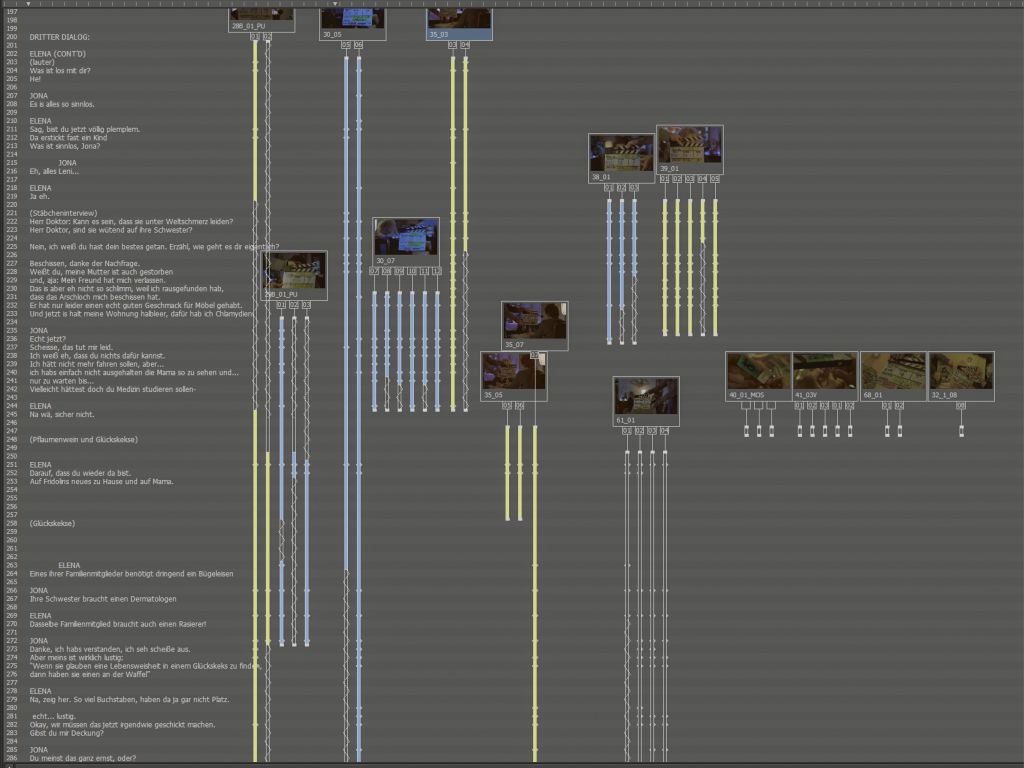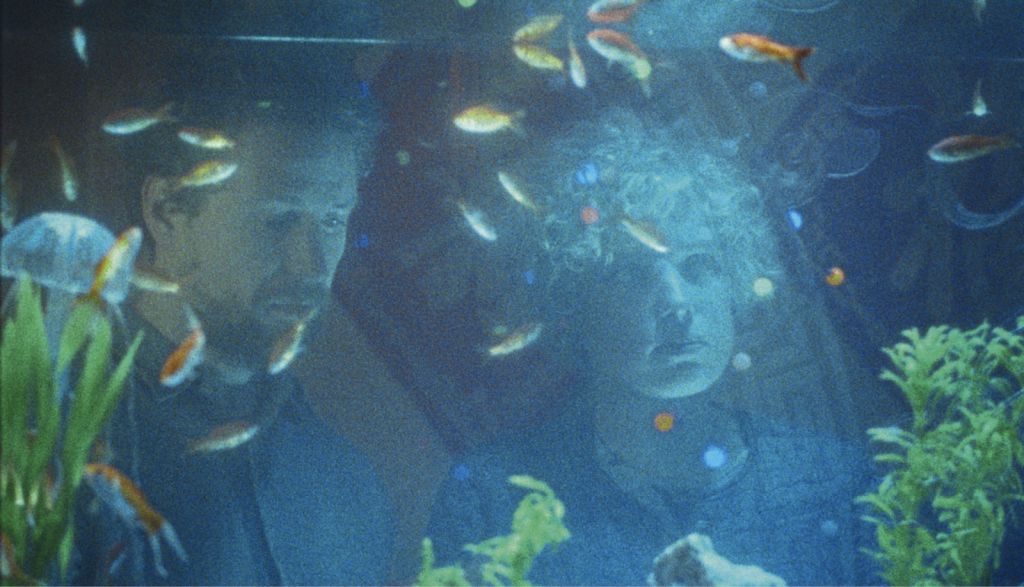On the Art of Film Editing
Film editors do their work in the background, and exactly what goes on in the editing suite is familiar to very few. It’s there, however, that a film’s content and message are refined and honed, and it’s editing and sound that render the images truly effective. Film Academy editing students Julia Willi and Philipp Mayer tell us about their studies, editing’s importance in film production, and the soft skills brought to bear by editors in their work.

In Julia Willi’s childhood, the cinema was a magical place that made a solemnly festive and elegant impression on her with its red curtains and chairs. And at age eleven, after playing around with her dad’s simple digital camera, she discovered that the material she’d filmed with it could be processed on the computer. The hobby that eventually arose from that ultimately led to the decision to apply to the editing programme at Film Academy Vienna after finishing school—and she did so with success. She’ll soon begin work on her final film editing project prior to graduation. And alongside her studies, she’s already worked on professional TV and cinematic productions as an assistant editor.
Philipp Mayer is likewise in the final phase of the master’s degree programme while already pursuing professional work in the field. Prior to his admission here, he’d majored in Theatre, Film, and Media Studies at the University of Vienna. He followed that by first gathering some broad impressions of the filmmaking process as a production driver, in the process realising that he’d most like to work with finished film material. He then applied to study editing at the Film Academy.

The editing programme begins with a basic introductory phase in which students from all majors offered at the Film Academy spend their first three semesters being taught as a single group. Every student gets to know film production from all of the relevant perspectives and also has to work once in each of the following positions: screenwriting, directing, sound, camera, and editing. “When you spend one-and-a-half years together as a single class, it gives rise to important networks that include interesting directing-and-editing combinations,” says Julia Willi on the benefits of this combined introductory phase. Following the third-semester directing tutorial, in which the students first construct a set and then spend two months filming together, the editing students begin devoting themselves intensively to their editing projects. Alongside the technical aspects of their craft, what editors need most of all are soft skills. “In the editing suite, the most important things are diplomacy and the willingness to compromise—but also to stand up for yourself. You need to learn how to communicate with the other departments, and that requires knowledge about how things run there,” Willi explains. “In the editing suite, we work to question and more sharply define what the film is about; the subtext comes into play,” adds Mayer. “You often sit there with the director, the material in front of you, and you need to figure out how best to work together. I like working with different people; everyone has their own ways of approaching things, and you have to adapt to each other.” When it comes to artistic decisions, finding common ground between the director and the editor is frequently a tightrope act where both sides have to compromise. “As a film editor, I need to get a feel for the director’s mentality so that we can arrive at a mutual style,” Mayer says.
A film’s genre isn’t necessarily the main factor behind how it gets edited. “Each and every edit is a dramaturgical decision and is based on the respective material, screenplay, and acting,” states Julia Willi. And Mayer points out that “one important thing for an editor is to be familiar with lots of other films and references. The art here is also a matter of interpreting people’s opinions at test screenings and getting a feel for the other participants as you work together; if you can do that, then you can edit all kinds of projects.”

A central point in editing is the topic of sound design, which is an important component of both the BA and the MA programme. “The sounds in a film appeal strongly to the emotions. And even if a scene doesn’t work that well visually, the auditory level can help it convey a whole lot more—like through music that touches you or sound effects that give rise to a certain atmosphere,” Willi explains.
Just where in the production process editors get involved is something that’s often director-dependent. In Film Academy projects, the decision on who will do the editing has to be made before the actual filming begins. “It’s nice to get involved early and have the opportunity to provide feedback on the screenplay. As an editor, you’re not simply a replaceable machine with just one program; what you actually do is attempt to use your own personal qualities to help shape the film artistically,” emphasises Mayer. But there are also projects, he adds, where the material has come together over an extended period of time, for which reason the editors weren’t involved right from the start. “The important thing is for it to be comprehensible why given a process is the way it is. As an editor, you do want to be taken seriously as a member of the artistic team,” Mayer concludes.

The course of basic training together with the other majors and the crucial instruction in sound design is something that both students value greatly about this programme. Julia Willi also highlights the atmosphere at the Film Academy: “After your initial three semesters of basic film training, you have the freedom to specialise according to your own personal interests. Our teachers provide feedback and act as mentors—so at the editing department, you’ll always find someone who’s willing to listen.” To her mind, it would be good if the master’s degree programme included more practice-oriented workshops with outside instructors. And Philipp Mayer, for his part, thinks it would be worthwhile to more strongly integrate the Certificate Programme in Electroacoustic and Experimental Music (ELAK): “For my current sound design project, I spent three days in the Foley studio together with two ELAK students dubbing in sounds like footsteps and swimming, which lent the sonic universe of this film some additional intensity. Film Academy students and ELAK students can learn a whole lot from each other. At the fact that our departments have both moved to the new Future Art Lab on the mdw Campus will definitely help us engage in more exchange than before.”
The virtuosity of a filmic narrative is frequently owed to the editor’s art—after all, every film that leaves a strong impression features well-done editing. It’s hence quite worthwhile to read the credits and pay attention to who the editors were.

